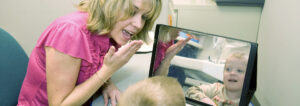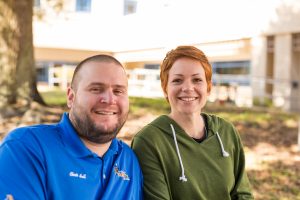Dr. Cassandra List Discusses Spasticity Management

Back to physical health resource hub
Video Transcript
Hi, I’m Dr. Cassandra List. I am a physical medicine and rehabilitation doctor.
I am the Medical Director of the Stroke Rehabilitation Program and the Spasticity Management Lead here at Brooks Rehabilitation Hospital.
Spasticity is a velocity-dependent increase in muscle tone, that’s the technical definition, but basically, it’s anytime there’s an injury to the brain or the spinal cord, we are vulnerable to developing spasticity which most people describe as muscle tightness or muscle stiffness.
Spasticity can come from many different origins. Some of these origins are traumatic brain injuries and spinal injuries, stroke, cerebral palsy and multiple sclerosis just to name a few.
Spasticity can not only be uncomfortable, but it can make it more difficult for us to get through our day. It can make it hard to walk or sit in a wheelchair. It can make it difficult to transfer in and out of a given position such as from a wheelchair into the car or it can make it difficult to get dressed or baths or clean certain areas just because the muscles can be so tight. That can be hard to, say, for example, open up your hand to clean out the hand or even cut your fingernails.
When we talk about spasticity management, it’s important for us to take a holistic approach to patient care and really understand what a person’s day to day is like, when is the spasticity interfering and how can we make it better?
It’s true that everybody and every body heals differently and although there are general patterns of spasticity, everyone is a little different in how they are affected by it, so it’s my job to develop a customized spasticity management plan for what is important to you.
There are several options for spasticity management, the most common being therapy, stretching, bracing, medications, botulinum toxin injections and surgically implanted intrathecal baclofen pump.
What I tell my patients is that each one of these options can work well, but usually it’s when we put a few of these together that we get the best results. Our hope is to calm the spasticity so that it’s easier to function in your day to day life.
To learn more about spasticity management at Brooks Rehabilitation, visit brooksrehab.org.


